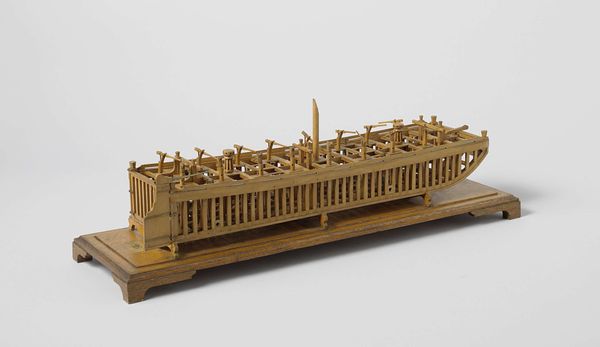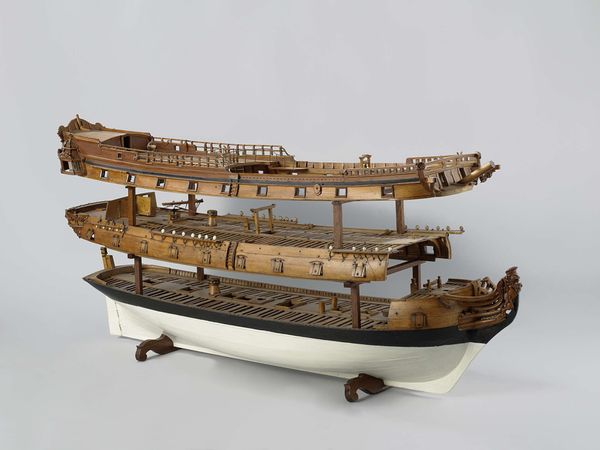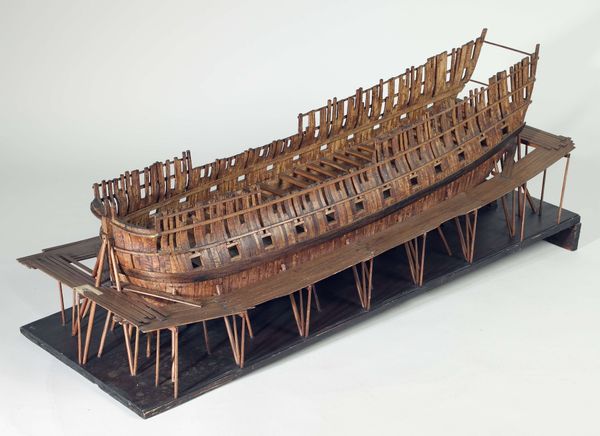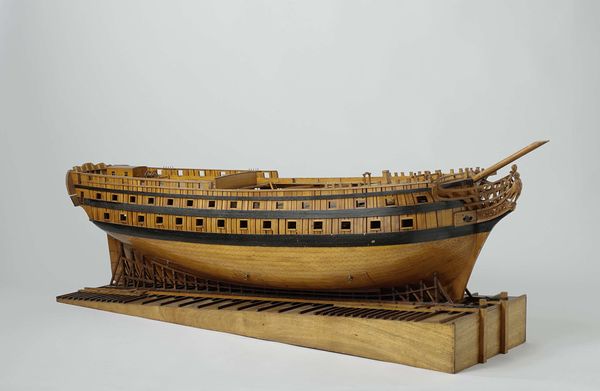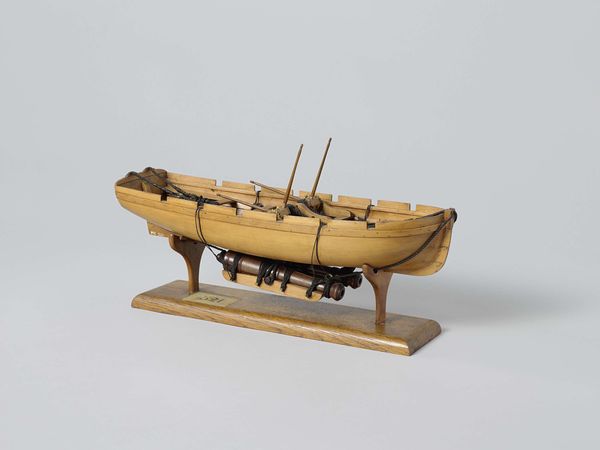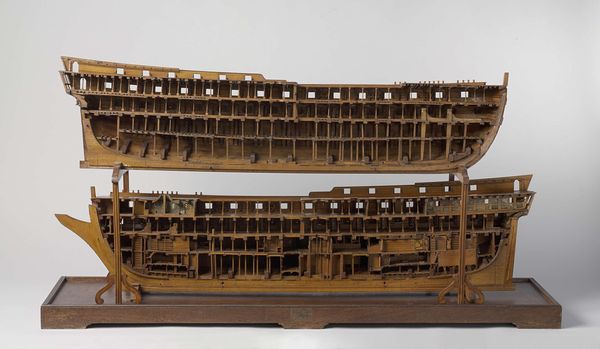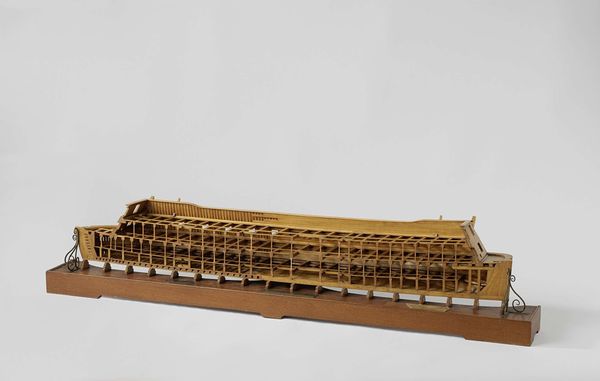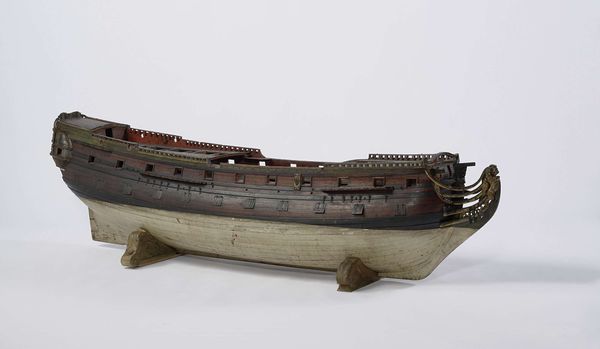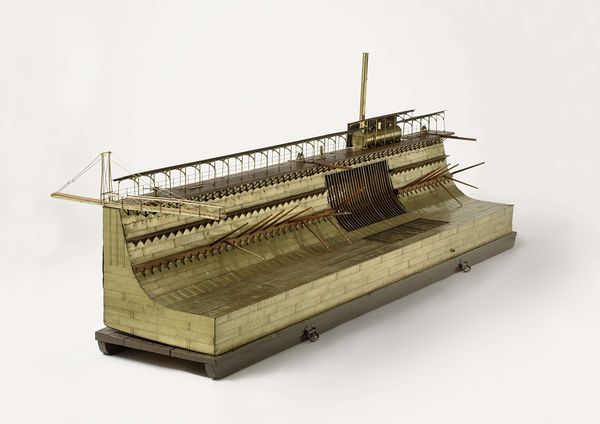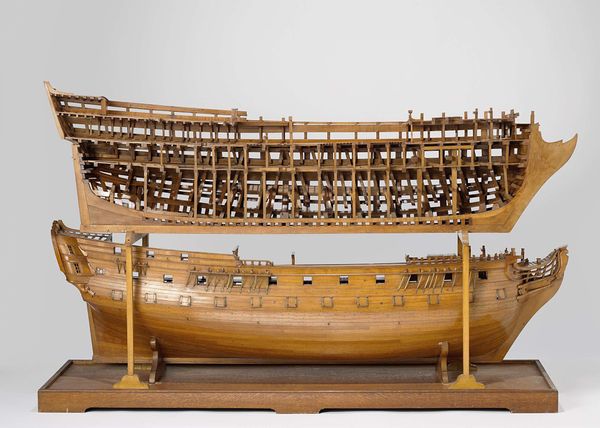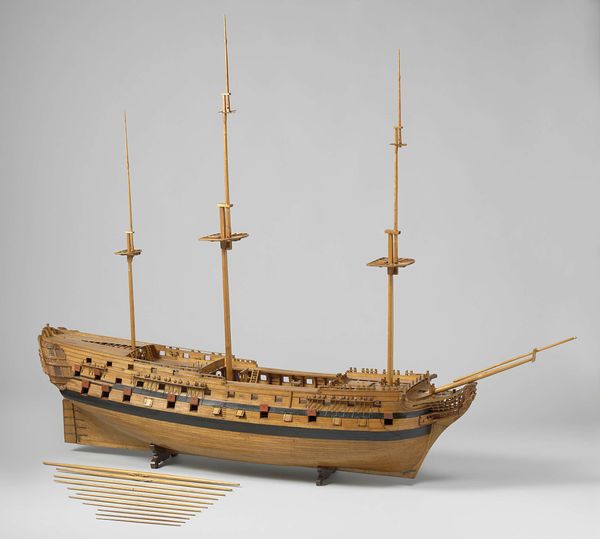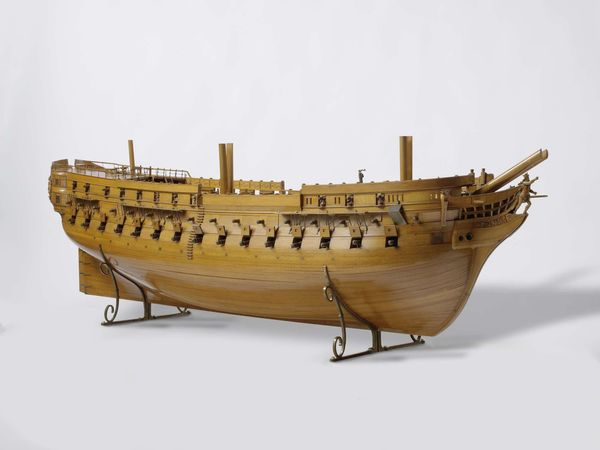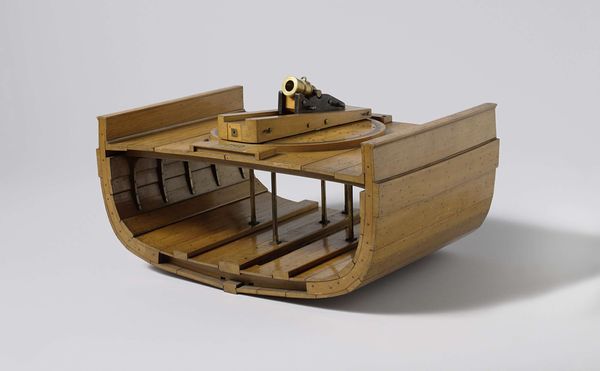
sculpture, wood
#
baroque
#
figuration
#
sculpture
#
wood
Dimensions: ship height 49 cm, ship length 163.5 cm, ship width 39.2 cm, ship camels height 23.5 cm, ship in camels width 78 cm
Copyright: Rijks Museum: Open Domain
Curator: This intricate sculpture, titled "Model of an East Indiaman in Camels," dates back to 1742. The piece is composed of expertly carved wood. What are your initial impressions of this Baroque sculpture? Editor: I am struck by the incredible level of detail. It’s like looking at a skeleton, an exposed anatomy of commerce and maritime ambition. The color of the wood itself lends warmth to what otherwise could seem sterile, almost architectural in its precision. Curator: Precisely. The Dutch East India Company, or VOC, was at its zenith in this period. It controlled vast trade routes and exerted significant political influence. A ship like this embodies both technological prowess and economic imperialism. Note how every piece is rendered meticulously from the hull’s individual planks to the ornate carving around the prow. It’s an impressive show of artistic craftsmanship of its time. Editor: And it speaks to the baroque sensibilities. The play of light and shadow across the skeletal structure creates a rhythm. And those curves. Notice the interplay of rectilinear and curved forms to guide the eye. I would describe this wooden ship sculpture as a beautiful interplay of line, plane and texture. Curator: These details were not arbitrary; they were symbols of power. This model reflects how nautical power became intertwined with the exercise of the colonial governance in this period. The level of artistry that's on display in crafting this scale-sized ship really highlights how such craftsmanship itself becomes symbolic of economic strength of nations during that period. Editor: It’s certainly effective, regardless of its underlying motives. Viewing such objects compels one to delve beyond the surface charm, exploring the complex layers of human history, maritime endeavor and the rise of early international trade. Curator: Absolutely, reflecting on this piece has enriched my awareness about how commerce, art and colonial expansion interweave together. It helps in better understanding our interconnected global narrative. Editor: And seeing its structural, nearly diagrammatic form forces you to re-examine a wooden warship in all its complex material arrangements. There’s much to admire and dissect in this unusual model.
Comments
No comments
Be the first to comment and join the conversation on the ultimate creative platform.
